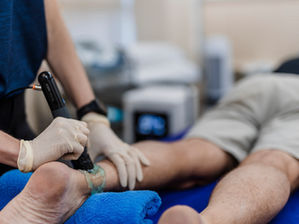RESILIENCE & Composure with Mindinsight
- Aug 28, 2018
- 3 min read

In the last issue, I discussed how resilience helps us to bounce back from the inevitable setbacks and challenges of life, creating positive memories for facing future challenges. I proposed that resilience is not just an aspect of personality (something you either have or don’t have), but is a skill that can be learned. I outlined that resilience involves six key areas – Vision, Composure, Reasoning, Tenacity, Collaboration and Health.
In this issue, I provide some more information about Composure.
Vision - Like a compass, providing purpose and direction.
Composure - Finding calm in difficult situations, being able to recognise stress, regulate emotions and manage negative environments.
Reasoning - Problem-solving.
Tenacity - Persevering, learning from successes and setbacks.
Collaboration - Reaching out for support.
Health - Maintaining healthy habits.
Stress and Arousal Stress isn’t just ‘in the mind’. It also involves physical sensations that are part of a mindbody state called “arousal”. It’s a subjective feeling that disturbs our sense of calm. The physical feelings can range from feeling tense, wound-up or irritated (at the milder end), to feeling anxious, panicky, overwhelmed or agitated (at the higher end).
These sensations are signals that our “fight-flight” response has been activated. This is the emotional brain taking control. It has one mission – to restore a sense of safety. The only problem is, it tends to go for simple, black and white solutions, regardless of the context. This narrowed lens results in tunnelvision and explains why people may think in “catastrophic” terms. What we need is help to calm down, so that our executive brain can make sense of the situation and problem solve (this is the reasoning part of resilience).
It is at these times that we need to have enough self-awareness to notice how we are responding and to apply techniques to keep us in a constructive mindset.
Responding Versus Reacting
Composure is about how effectively we can regulate our emotions during difficult or stressful situations so that we don’t jump to the wrong conclusion, and can respond rather than react. Taking long, slow, deep breaths can help our system calm down so that our arousal goes back into a more neutral state. The scientific term for this is homeostasis.
Taking Perspective Taking perspective is about shifting from tunnel vision to taking a wide-angle view of the situation. Taking perspective can help us slow down and assess the actual risk and our ability/resources to manage the situation. Particularly in situations that involve other people, if we are not facing a threat or danger, time is an ally, preventing us from reacting in a way that might make the situation worse. Time helps perspective taking.
Challenging Assumptions We all make assumptions about situations. Sometimes it’s easy to jump to simple conclusions such as “this is too hard”, “this always happens to me”, “I’ll fail”, “they don’t like me” or “they are ignoring me”. This way of thinking involves reasoning with emotions, not data. Often it involves under-estimating our ability to cope and is negatively biased. This narrows our lens of what is possible.
Positive Reappraisal Taking perspective and challenging assumptions helps to create psychological distance between the problem and ourselves. This allows new data to enter our awareness, so that our internal dialogue changes from a “things are hopeless”, “I can’t cope” style to “it’s not as bad as it seems” and “I can think of some options”. Hope and optimism appear on the horizon. Hope and optimism are positive emotions that restore a sense of control, help us to reappraise the situation as manageable, thereby restoring composure.




















































